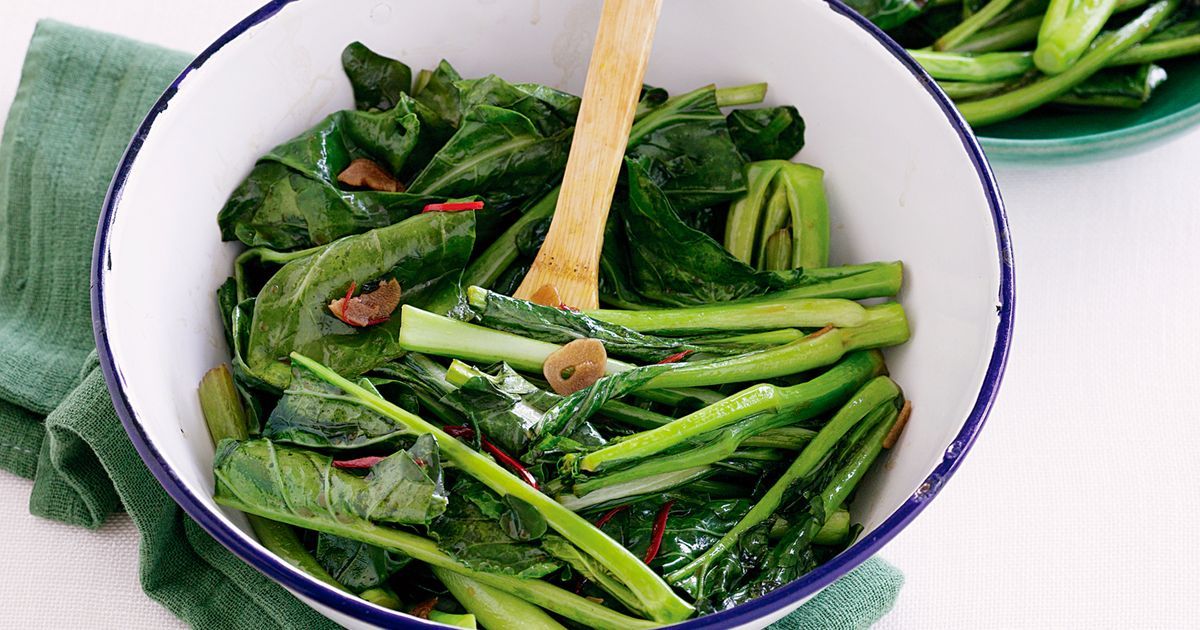
Asian greens are a diverse group of leafy vegetables that add flavor, nutrition, and color to dishes. From bok choy to mizuna, these greens are staples in many Asian cuisines. But what makes Asian greens so special? For starters, they are packed with vitamins, minerals, and antioxidants, making them a healthy choice for any meal. They are also incredibly versatile, suitable for stir-fries, soups, salads, and even smoothies. Did you know that some Asian greens can be harvested multiple times in a season? This makes them not only nutritious but also economical. Whether you're a seasoned chef or a home cook, incorporating Asian greens into your diet can elevate your culinary game. Ready to learn more? Let's dive into 25 fascinating facts about these amazing greens!
Key Takeaways:
- Asian greens, like bok choy and napa cabbage, are not only delicious but also packed with vitamins, fiber, and antioxidants. They're great for your health and can be used in a variety of dishes!
- You can easily grow your own Asian greens at home, even if you don't have a big garden. They're fast-growing, pest-resistant, and can be harvested multiple times. Plus, they hold cultural significance in various Asian cuisines!
What Are Asian Greens?
Asian greens are a diverse group of leafy vegetables commonly used in Asian cuisine. They are known for their unique flavors, textures, and nutritional benefits. Let's dive into some fascinating facts about these versatile veggies.
-
Bok Choy is one of the most popular Asian greens. It has a mild, cabbage-like flavor and is often used in stir-fries and soups.
-
Napa Cabbage is another staple in Asian cooking. It's the main ingredient in kimchi, a traditional Korean fermented dish.
-
Mizuna has a slightly peppery taste and is often used in salads. Its feathery leaves add a unique texture.
-
Gai Lan, also known as Chinese broccoli, has thick stems and small florets. It’s commonly steamed or stir-fried.
-
Tatsoi is a spoon-shaped green with a mild mustard flavor. It’s great in salads or lightly sautéed.
Nutritional Benefits of Asian Greens
These greens are not just tasty; they are packed with nutrients that can boost your health. Here are some key benefits.
-
Rich in Vitamins: Many Asian greens are high in vitamins A, C, and K, which are essential for immune function and bone health.
-
Low in Calories: These vegetables are low in calories, making them a great option for weight management.
-
High in Fiber: The fiber content helps with digestion and can keep you feeling full longer.
-
Antioxidant Properties: Many Asian greens contain antioxidants that can help protect your cells from damage.
-
Calcium Source: Some, like bok choy, are good sources of calcium, important for bone health.
Culinary Uses of Asian Greens
Asian greens are incredibly versatile in the kitchen. They can be used in a variety of dishes, from soups to salads to stir-fries.
-
Stir-Fries: Many Asian greens are perfect for quick stir-fries. They cook quickly and retain their crunch.
-
Soups: Adding greens like bok choy or napa cabbage to soups can enhance the flavor and nutritional value.
-
Salads: Mizuna and tatsoi are excellent in fresh salads, adding a peppery kick.
-
Fermentation: Napa cabbage is the star of kimchi, a fermented dish that’s both tasty and probiotic-rich.
-
Steaming: Gai lan is often steamed and served with oyster sauce in Chinese cuisine.
Growing Asian Greens
If you have a green thumb, you might be interested in growing your own Asian greens. They are relatively easy to cultivate and can be grown in various climates.
-
Fast-Growing: Many Asian greens grow quickly, making them ideal for home gardens.
-
Cool-Weather Crops: These greens often thrive in cooler weather, perfect for spring and fall planting.
-
Container Gardening: They can be grown in containers, making them suitable for small spaces.
-
Pest-Resistant: Some varieties are resistant to common garden pests, reducing the need for pesticides.
-
Continuous Harvest: Many Asian greens can be harvested multiple times, providing a steady supply of fresh veggies.
Cultural Significance of Asian Greens
Asian greens hold a special place in various cultures, often being used in traditional dishes and celebrations.
-
Chinese New Year: Bok choy and other greens are often used in dishes served during Chinese New Year celebrations.
-
Korean Cuisine: Napa cabbage is essential in making kimchi, a staple in Korean diets.
-
Japanese Salads: Mizuna is a common ingredient in Japanese salads and is also used in hot pots.
-
Thai Cooking: Gai lan is frequently used in Thai stir-fries and noodle dishes.
-
Vietnamese Pho: Tatsoi and other greens are often added to pho, a traditional Vietnamese soup.
The Final Bite
Asian greens aren't just tasty; they're packed with nutrients and flavor. From bok choy to mizuna, these veggies bring a lot to the table. They can be stir-fried, steamed, or even eaten raw in salads. Plus, they're easy to grow in your garden.
Adding these greens to your diet can boost your health with vitamins, minerals, and antioxidants. They also add a unique twist to your meals, making them more exciting. So next time you're at the market, grab some Asian greens and experiment in the kitchen.
Whether you're a seasoned cook or just starting, these greens are a great addition to any meal. Give them a try and see how they can transform your dishes. Happy cooking!
Frequently Asked Questions
Was this page helpful?
Our commitment to delivering trustworthy and engaging content is at the heart of what we do. Each fact on our site is contributed by real users like you, bringing a wealth of diverse insights and information. To ensure the highest standards of accuracy and reliability, our dedicated editors meticulously review each submission. This process guarantees that the facts we share are not only fascinating but also credible. Trust in our commitment to quality and authenticity as you explore and learn with us.


